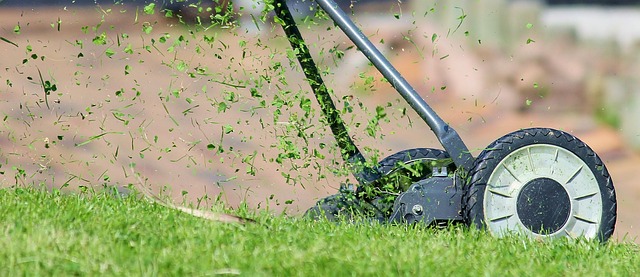Career Paths in Groundskeeping: Skills, Certifications, and Seasonal Workflows
Groundskeeping combines practical skills, plant knowledge, and routine workflows to maintain outdoor spaces year-round. This article outlines common career paths in grounds maintenance, core competencies for turfcare and landscaping, relevant certifications and apprenticeships, and how seasonal planning shapes daily tasks.

Groundskeeping roles cover a range of responsibilities from turfcare to landscape upkeep, combining physical work with technical knowledge. Professionals in this field apply horticulture principles, operate maintenance equipment, and follow safety and sustainability practices to keep parks, campuses, and commercial sites functional and attractive. Understanding the skills, credentials, and seasonal workflows relevant to grounds maintenance helps prospective workers and supervisors plan training, staffing, and maintenance schedules effectively.
What skills support turfcare and mowing?
Strong hands-on skills are central to turfcare and effective mowing. Groundskeepers need to read turf conditions, select appropriate mowing heights, and interpret seasonal needs for aeration or overseeding. Physical stamina, attention to detail, and basic mechanical ability for mower maintenance are important. Turfcare also benefits from observational skills that detect signs of soil compaction, drainage problems, or early pest pressure. Communication and time management allow teams to coordinate mowing, edging, and cleanup to maintain appearance while minimizing damage to grass and surrounding planting beds.
How does irrigation and soilhealth affect growth?
Irrigation and soilhealth are core factors in plant performance and resource efficiency. Proper irrigation scheduling prevents drought stress and reduces disease risk, while soil testing informs amendments to correct pH, nutrient imbalances, or organic matter deficits. Groundskeepers often use moisture sensors, timers, and zone mapping to tailor water delivery. Improving soil structure with aeration and organic inputs supports root development, reduces runoff, and improves resilience against heat or heavy use. Knowledge of irrigation system components and basic troubleshooting helps avoid overwatering and preserves long-term turf and plant health.
Which certifications and apprenticeship paths exist?
Certifications can validate horticulture, safety, and equipment operation skills without implying specific job openings. Common pathways include pesticide or integrated pest management (IPM) endorsements, certified grounds technician programs, and tree care or arborist certificates for those working with woody plants. Apprenticeship programs combine on-the-job training with classroom instruction in horticulture, turf science, and equipment safety. Employers and trade organizations often offer continuing education modules in irrigation, soil testing, and sustainability practices that support career progression within landscaping and groundskeeping roles.
How do pruning, fertilization, and weedcontrol work?
Pruning, fertilization, and weedcontrol are routine tasks organized around plant needs and seasons. Pruning schedules differ by species and purpose—structural pruning in late winter for many shrubs and selective pruning during the growing season for flowering plants. Fertilization strategies use soil tests and turfgrass requirements to time nitrogen, phosphorus, and potassium applications for growth bursts or recovery. Weedcontrol combines cultural tactics—improving turf density and mulch—with targeted herbicide use following label guidelines and local regulations. Integrating these practices reduces disease, supports landscape aesthetics, and prolongs plant longevity.
How is pestmanagement and safety managed on site?
Pestmanagement in groundskeeping emphasizes monitoring, correct identification, and choosing the least disruptive control methods. IPM approaches prioritize cultural controls, biological agents, and targeted treatments when needed. Safety requirements include personal protective equipment (PPE) for chemical handling and noise or vibration controls when using powered equipment. Site safety also covers traffic control, hazard assessment, and training in safe lifting and machinery operation. Regular safety briefings and documented procedures help teams reduce accidents and comply with workplace regulations.
What equipment and sustainability practices are used?
Equipment ranges from hand tools and push mowers to ride-on mowers, aerators, and small excavators. Regular maintenance, proper fuel handling, and operator training extend equipment life and improve safety. Sustainability practices have become integral, including water-efficient irrigation, selection of low-input plant species, and reducing fuel consumption through route planning and equipment upgrades. Recycling green waste through composting and using organic soil amendments supports soilhealth and reduces landfill waste. Balancing productivity with environmentally responsible techniques helps sites remain functional while lowering long-term resource demands.
Groundskeeping careers blend practical trade skills with scientific knowledge in horticulture, irrigation, soilhealth, and landscape management. Seasonal workflows shape daily tasks—mowing and pruning in growing months, winterizing irrigation and equipment in colder periods—while certifications and apprenticeship training support safe, effective practice. With attention to equipment care, pestmanagement, fertilization, and sustainability, grounds maintenance teams can maintain healthy, attractive outdoor spaces over time.





